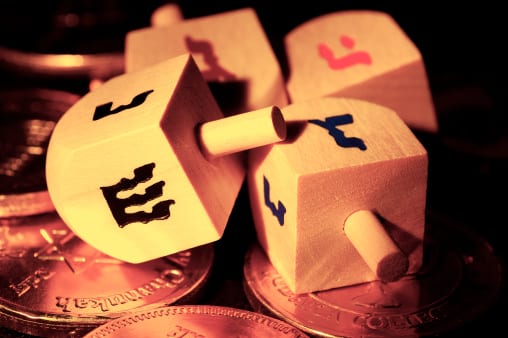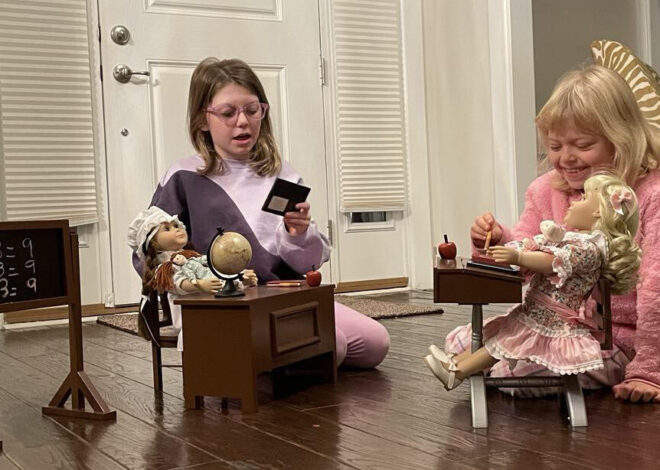Perhaps the best-known Jewish toy, the dreidel–a spinning top traditionally made of wood–has a place in the homes of Jewish children around the world.
Most often played for chocolate coins called “gelt,” or M&Ms for those whose sweet tooth overrules concern for historical accuracy, the dreidel reminds Jews of the Hanukkah story’s miracle of the oil.
History
The tradition of spinning a dreidel goes back thousands of years, writes Uzi Lampoon in the December 1997 issue of “Jewish Magazine.” Forbidden under Greek rule to study the Torah, their religious text, the Jews fooled officials by placing children outside clandestine study groups. The occupying army saw only kids at play with spinning tops, and Judaism flourished.
Significance
Commemorated over eight nights in November or December each year, Hanukkah recalls the victory of the Jewish Maccabees. After years of fighting Greek rule, the Maccabees began to restore the temple in Jerusalem. Jewish custom dictates that an “eternal light” burn without cessation in each synagogue. The temple’s light required oil to remain lit, but the Maccabees had only a one-night supply, and it would take eight days to create more oil. Miraculously, the oil lasted the entire time, allowing the temple’s rededication.
Identification
Imprinted with Hebrew letters on its four sides, a dreidel serves as a reminder of the miracle. The letters “nun,” “gimmel,” “hay” and “shin” represent the words in the phrase “Nes Gadol Haya Sham,” which means “(A) Great Miracle Happened There.” For Israelis, it’s “(A) Great Miracle Happened Here,” with the letter “pey” taking the place of “shin” in the phrase “Nes Gadol Haya Po.”
Game Play
In essence, dreidel involves gambling for chocolate, and variations abound. The basic game requires at least two people (the more, the better), who start with the same amount of candy, pennies or whatever. Players each put a piece of candy in the pot before taking turns spinning the dreidel. Each letter on the dreidel indicates the action taken if a player’s dreidel lands on it. Here’s how to remember it, if you’ve misplaced your Hebrew-English dictionary: “Nun” stands for “nothing,” meaning the player neither wins nor loses. You can think of “gimmel” as “gimme everything,” meaning the player gets everything in the pot. “Hey” means “half,” as in winning half the pot. “Shin’ means “put in” and “pey” means “pay,” so the player puts one piece of chocolate in the pot. The game ends when just one player has chocolate left, or the sugar crashes start.
Word Origin
The word “dreidel” comes from Yiddish, a Jewish language combining Hebrew and German, based on the word “drei,” which means “to spin.” When the establishment of a Jewish state in the 1948 revived Hebrew as a spoken language, the word “sevivon” entered the lexicon as an alternative to “dreidel,” but singers from Raffi to the Bare Naked Ladies have popularized the Yiddish term in the song “I Have a Little Dreidel.”





